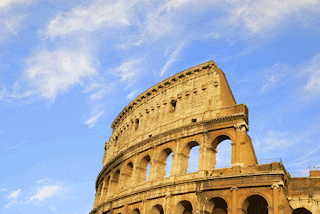 Italy is located partly on the European Continent and partly on the Italian Peninsula in Southern Europe and on the two largest islands in the Mediterranean Sea, Sicily and Sardinia. Italy shares its northern, Alpine boundary with France, Switzerland, Austria and Slovenia. The independent states of San Marino and the Vatican City are enclaves within the Italian Peninsula, and Campione d'Italia is an Italian exclave in Switzerland. The territory of Italy covers 301,338 km² and is influenced by a temperate seasonal climate. With 60.2 million inhabitants, it is the sixth most populous country in Europe, and the twenty-third m
Italy is located partly on the European Continent and partly on the Italian Peninsula in Southern Europe and on the two largest islands in the Mediterranean Sea, Sicily and Sardinia. Italy shares its northern, Alpine boundary with France, Switzerland, Austria and Slovenia. The independent states of San Marino and the Vatican City are enclaves within the Italian Peninsula, and Campione d'Italia is an Italian exclave in Switzerland. The territory of Italy covers 301,338 km² and is influenced by a temperate seasonal climate. With 60.2 million inhabitants, it is the sixth most populous country in Europe, and the twenty-third m ost populous in the world.
ost populous in the world.The land known as Italy today has been the cradle of European cultures and peoples, such as the Etruscans and the Romans. Italy's capital, Rome, was for centuries the political centre of Western civilisation, as the capital of the Roman Empire. After its decline, Italy would endure numerous invasions by foreign peoples, from Germanic tribes such as the Lombards and Ostrogoths, to the Normans and later, the Byzantines, among others. Centuries later, Italy would become the birthplace of the Renaissance, an immensely fruitful intellectual movement that would prove to be integral in shaping the subsequent course of European thought.
Through much of its post-Roman history, Italy was fragmented into numerous kingdoms and city-states (such as the Kingdom of Sardinia, the Kingdom of the Two Sicilies and the Duchy of Milan), but was unified in 1861, a tumultuous period in history known as the "Risorgimento". In the late 19th century, through World War I, and to World War II, Italy possessed a colonial empire, which extended its rule to Libya, Eritrea, Italian Somaliland, Ethiopia, Albania, Rhodes, the Dodecanese and a concession in Tianjin, China.
Modern Italy is a democratic republic and the world's eighteenth most developed country, with the eighth or tenth highest quality of life index rating in the world. It is a founding member of what
 is now the European Union and North Atlantic Treaty Organization. Italy is also a member of the G8 and G20. It is a member state of the Organisation for Economic Co-operation and Development, the World Trade Organization, the Council of Europe, and the Western European Union as well. The country's European political, social and economic influence make it a major regional power, alongside the United Kingdom, France, Germany, and Russia, and Italy has been classified in a study, measuring hard power, as being the eleventh greatest worldwide national power. The country has a high public education level, high labor force, is a globalised nation, and also has 2009's sixth best international reputation. Italy also has the world's nineteenth highest life expectancy, and the world's second best healthcare system. It is the world's fifth most visited country, with over 43.7 million international arrivals, and boasts a long tradition and several achievements in the arts, science and technology, including the world's highest number of UNESCO World Heritage Sites to date.
is now the European Union and North Atlantic Treaty Organization. Italy is also a member of the G8 and G20. It is a member state of the Organisation for Economic Co-operation and Development, the World Trade Organization, the Council of Europe, and the Western European Union as well. The country's European political, social and economic influence make it a major regional power, alongside the United Kingdom, France, Germany, and Russia, and Italy has been classified in a study, measuring hard power, as being the eleventh greatest worldwide national power. The country has a high public education level, high labor force, is a globalised nation, and also has 2009's sixth best international reputation. Italy also has the world's nineteenth highest life expectancy, and the world's second best healthcare system. It is the world's fifth most visited country, with over 43.7 million international arrivals, and boasts a long tradition and several achievements in the arts, science and technology, including the world's highest number of UNESCO World Heritage Sites to date.







